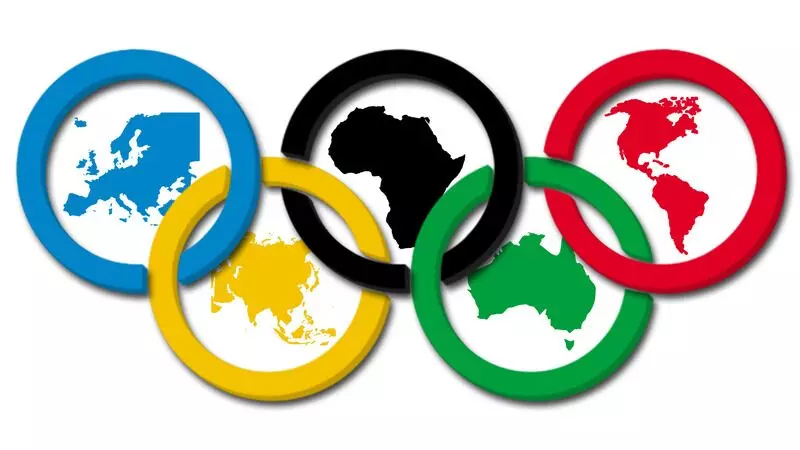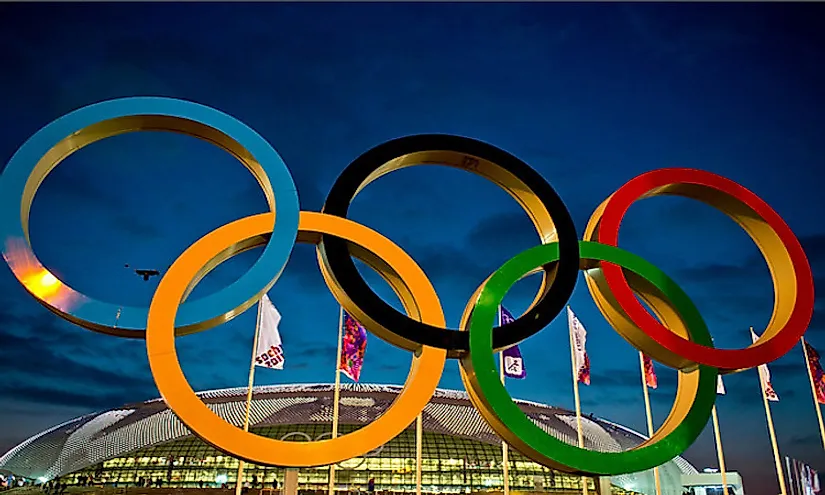One of the most recognizable symbols around the world is the five Olympic rings, and its uniqueness lies in its simplicity of execution, which is why many sports fans depict it on their faces and in their hairstyles. The rings are arranged in a W-shape. Their colors are (from left to right): blue, black, red, yellow and green. The Olympic emblem was first presented in 1920 at the VII Summer Olympic Games in Antwerp (Belgium).
There are several theories about the origin and interpretation of such a popular emblem.
The main version is a symbolic image of the unity of 5 continents, which was invented in 1913 by Baron Pierre de Coubertin. Until 1951, it was widely believed that a particular color corresponded to a particular continent. In particular, Europe is blue, Africa is black, America is red, Asia is yellow, Australia is green, but since the middle of the 20th century (in order to move away from racial discrimination), such a distribution of colors has been abandoned. The theory of the unity of all peoples is also supported by the fact that the flag of any state contains at least 1 color from the emblem.

Another version says that the idea of 5 multi-colored rings was taken from the psychologist Carl Jung. It was he who, during the period of enthusiasm for Chinese philosophy, combined the symbol of greatness and vitality (circle) with 5 colors, reflecting the types of energies (water, wood, fire, earth and metal). In 1912, the psychologist also introduced his own image of the Olympic competition – the modern pentathlon. In his opinion, all Olympians had to master each of the 5 types – swimming (water element – blue), fencing (fiery – red), cross-country running (earth – yellow), equestrian sports (wood element – green) and shooting (metal element – black).
When developing a personal emblem for each Olympic Games, this symbolism of 5 rings is always used. Due to their versatility, the rings are perfectly combined with other components of the image. National Olympic Committees have their own official emblems, but they also necessarily have 5 Olympic rings in their image.
Olympic symbols are the attributes of the Olympic Games used by the International Olympic Committee for the Olympic Movement around the world.
Olympic symbols include:
- flag (rings),
- hymn,
- the oath,
- slogan,
- medals,
- the fire,
- olive (laurel) branch,
- salute,
- mascots,
- emblems
The flag was designed by Pierre de Coubertin in 1913 and presented at the 7th Summer Olympic Games in Antwerp in 1920.
The Olympic Flame was lit for the first time at the IX Summer Games
in Amsterdam – 1928 (Netherlands).

The Olympic flame is lit on the territory of the ruins of the temple of the goddess Hera in ancient Olympia in Greece from a parabolic mirror. The fire on the torch is passed from athlete to athlete during a multi-day symbolic relay race that takes place across all 5 inhabited continents of the Earth.
The Olympic salute is a variation of the Roman salute, but with a higher raising of the arms.
The Roman salute is a gesture in which the right hand is extended forward with a straight palm and fingers. In some versions, the arm is raised at an angle, while in others it is extended parallel to the ground. It was used by Roman legionnaires when greeting the emperor, as well as by some knightly orders (for example, the Teutonic Order), then by Hitler.
This greeting was used at the VIII and XI Summer Olympic Games in Paris in 1924 and in Berlin in 1936.
After the end of World War II, in view of the great similarity with the Nazi salute, it is no longer used, although it is not officially banned.
